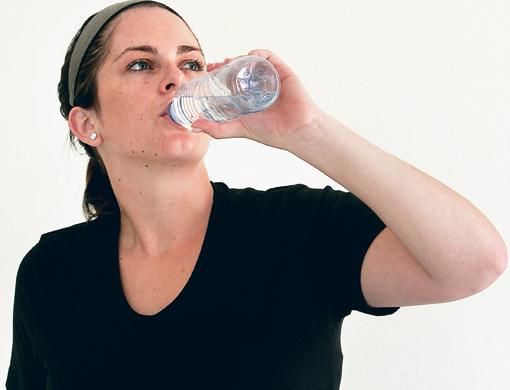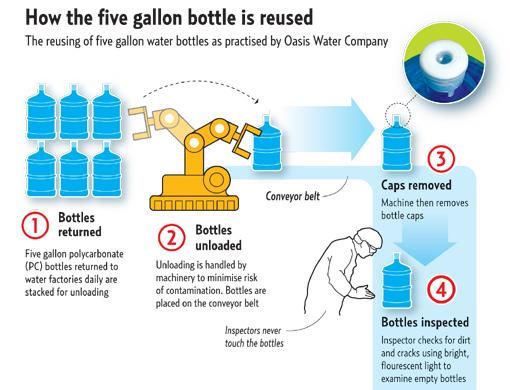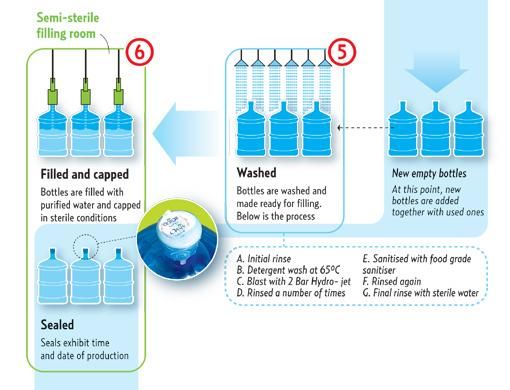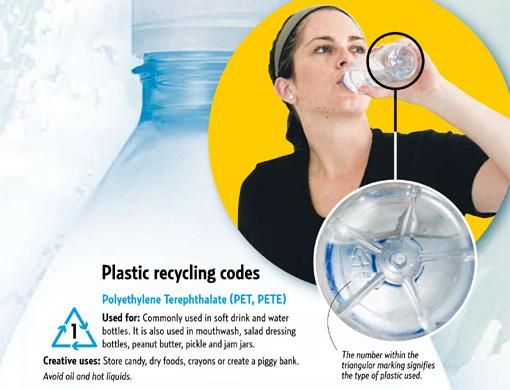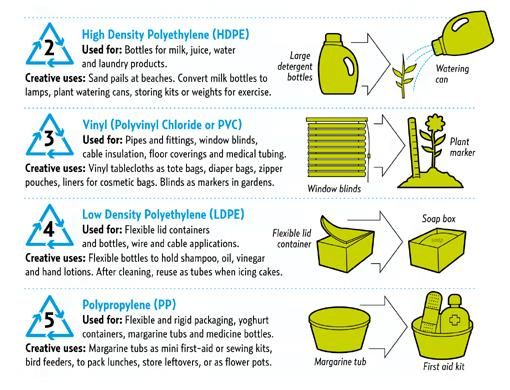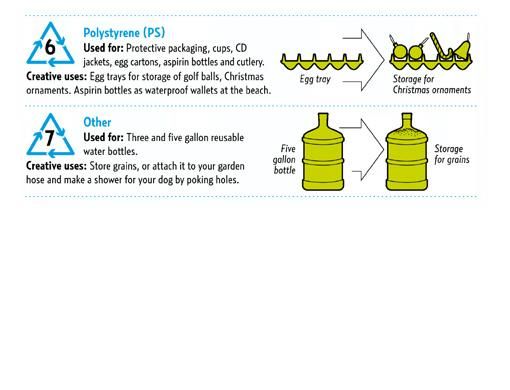Many water bottles end up in the bin. Some get reused for water, juices, even hot oil. This is good but in our ignorance about plastic's reaction with chemicals in food and heat, are we heading towards ill health? Gulf News Wipe Out Waste (WoW) campaign helps you decode the use of water bottles.
The number one defines something that is first in rank or order. But, when that figure appears on the base of your water bottle, does it mean the same?
The international Society of the Plastic Industry created the Resin Identification Code, or the triangular symbol engraved at the bottom of a plastic water bottle, in 1988 to help recyclers identify the type of plastic used, which then allows them to sort through plastic products.
Number one appears on most water bottles and is used to represent Polyethylene Terephthalate (PET), which is a clear form of plastic.
Kamran Yousuf, quality assurance manager, Masafi said: "PET is used to make water bottles. The number mentioned within the triangular marking signifies the type of resin, which in our case is 1."
Paul Dunlea, plant manager, Oasis Pure Water said: "All bottles should have the triangular symbol at the bottom. Sometimes, the impression might be missed or incomplete. This is because the mould was not hot enough."
Dunlea is a certified 'plant operator' by the Asia and Middle East Bottled Water Association, accredited by the International Bottled Water Association, a trade association that represents the global water bottle industry.
A representative from Jeema Water Company said: "The number represents the mould that has been used to manufacture the bottle. If there is an error with any bottle, we can easily track the mould and fix it. The triangular symbol confirms that a bottle can be recycled."
On a daily basis, several people refill plastic bottles with water from a cooler. But, there are others who throw away the bottles after a one-time use.
Dunlea confirms that the water bottles can be reused. He said: "Reusing any drinks container without adequate washing with warm, soapy water and rinsing can result in the spread of germs. You can be assured that it is quite safe to reuse PET bottles."
However, he urges everyone to be careful. He said: "It is difficult to properly wash the neck of a PET bottle due to its narrowness. Additionally, it is not recommended to use the bottle for hot liquids. Some people store oil in these bottles, which causes the chemicals in the plastic to leach out. These chemicals may be dangerous."
Yousuf agreed. He said: "As long as they are not exposed to abnormal conditions like high temperatures for a prolonged period of time, the PET bottles are safe for reusing." Don't leave any water bottles in the car.
Saving on reusing
The benefits of reusing the water bottle are not limited to protecting the environment. According to non-commercial website bottledwaterblues.com, over 90 per cent of the cost of a bottle of water is in the "bottle, lid and label". Every time you refill your water bottle, you save on 90 per cent of the cost.
If you pay Dh1 for a bottle of water, every time you reuse it - you save 90fils. If you buy a bottle a day, and instead reuse it for a month, the saving could be billed at Dh27. There is of, course breakage, loss or just the need to get a fresh bottle, which could then mean a saving of Dh24 in 30 days.
What does wiping out this waste get you in a month? Well, six passages under the watchful eye of Salik (road toll), 8 entries into a public park, 2 second-hand novels, a meal, enough fuel to last at least 3 days, a pair of funky flip flops, 2 DVD movie rentals, a phone card to call home, a stuffed toy, 4 magazines and a newspaper, and the list goes on.
Of course, at home you would have to buy a five gallon bottle of water to be able to refill the bottle. However, that would still put the saving at around Dh18, which is Dh216 in a year. That amount would let you provide a daily meal for a child in a developing country for at least six months.
Another very commonly reused form of plastic is the five-gallon water bottle made from Polycarbonate (PC). Dunlea said: "Polycarbonate is the material used globally for reusable five-gallon bottles as it is tough and washable with high levels of transparency and clarity. These bottles are a safe, cost effective and environmentally friendly system for bulk water delivery and usage."
The five-gallon bottle is designed to be reused. The plastic is of high-quality, so the bottle is robust and can be reused at least 35 times. Dunlea said: "We pay more for the plastic in order to ensure that the bottles are safe for reusing. However, this cost is not directly translated to the customer."
He compared the five-gallon bottles to cutlery and said: "No one would want to use dirty cutlery. We wash it and then reuse it. Five-gallon bottles are exactly the same. Water companies make sure the bottles are thoroughly cleaned before refilling them with water."


